

Genesis StoryTime was a videotex storybook that was broadcast in Canada and USA, 1983-1990. The Telidon graphics were converted to video and broadcast like a regular TV-channel, usually without sound. Images and video from Tedium.


Genesis StoryTime was a videotex storybook that was broadcast in Canada and USA, 1983-1990. The Telidon graphics were converted to video and broadcast like a regular TV-channel, usually without sound. Images and video from Tedium.
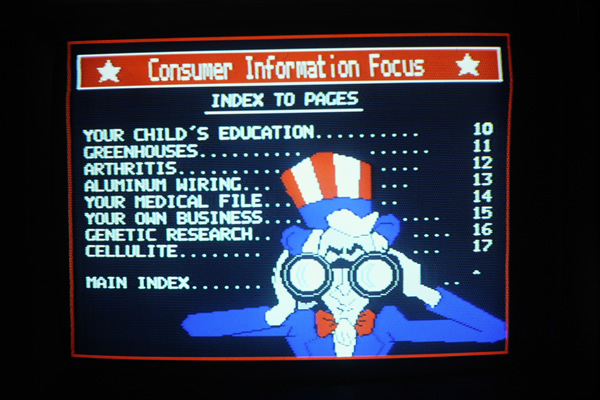
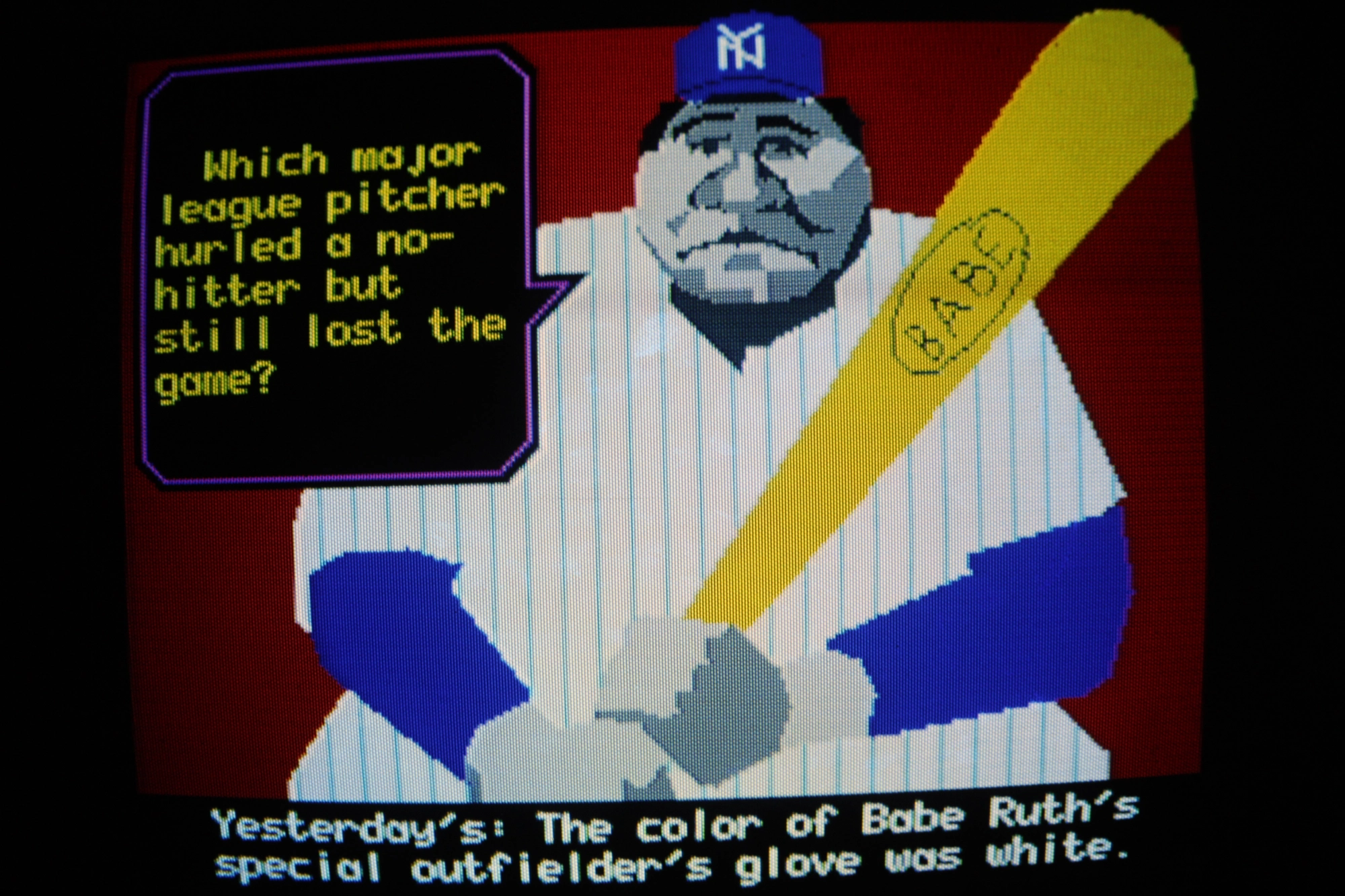
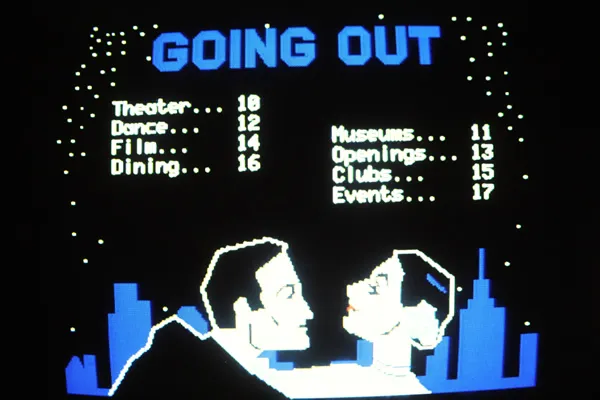
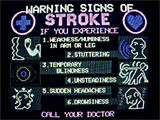
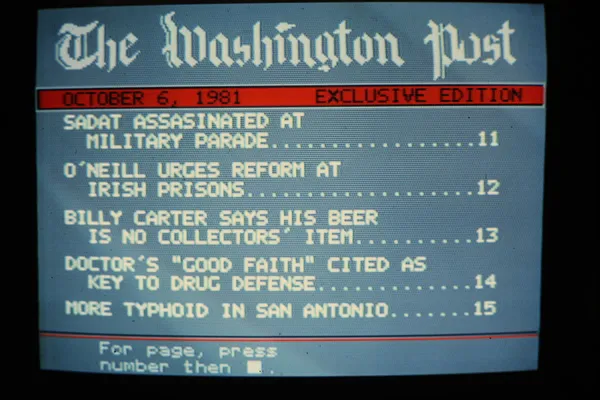

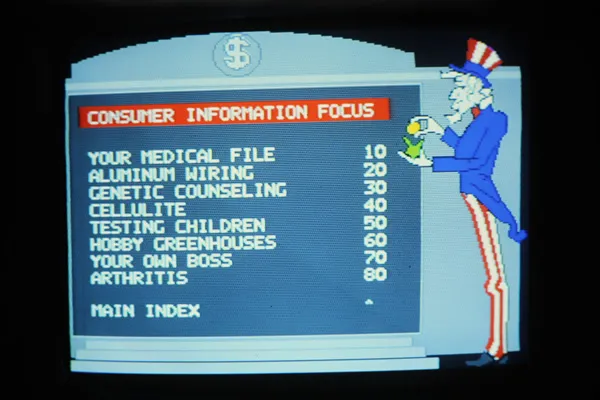
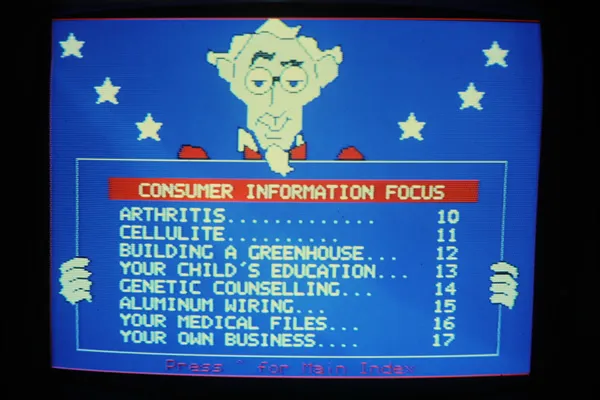
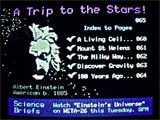
Telidon graphics by John Vaughan for the PBS-station WETA, 1981. He created them with a Norpak Frame Creation Terminal.

Glenn Howarth’s workstation for Telidon graphics, which he made 1981-1985. The photo is from the book Machine stitched into a corner of the Canadian modern age flag: Glenn Howarth’s Telidon art (pdf) that has plenty of Howarth’s not so text graphics. It was written by John Dorno, who has been researching and restoring Telidon art for years.
Learn more about Telidon
An interactive videotex art work, part of A Hummer’s campaign to run for mayor of Toronto, 1982. A Hummer ended up at 2nd place with 10% of the votes. More here.
Environment Canada Weather Channel using the alphageometrical videotex protocol Telidon. From the mid 1980s. Thanks to Frederic Cambus for sharing.
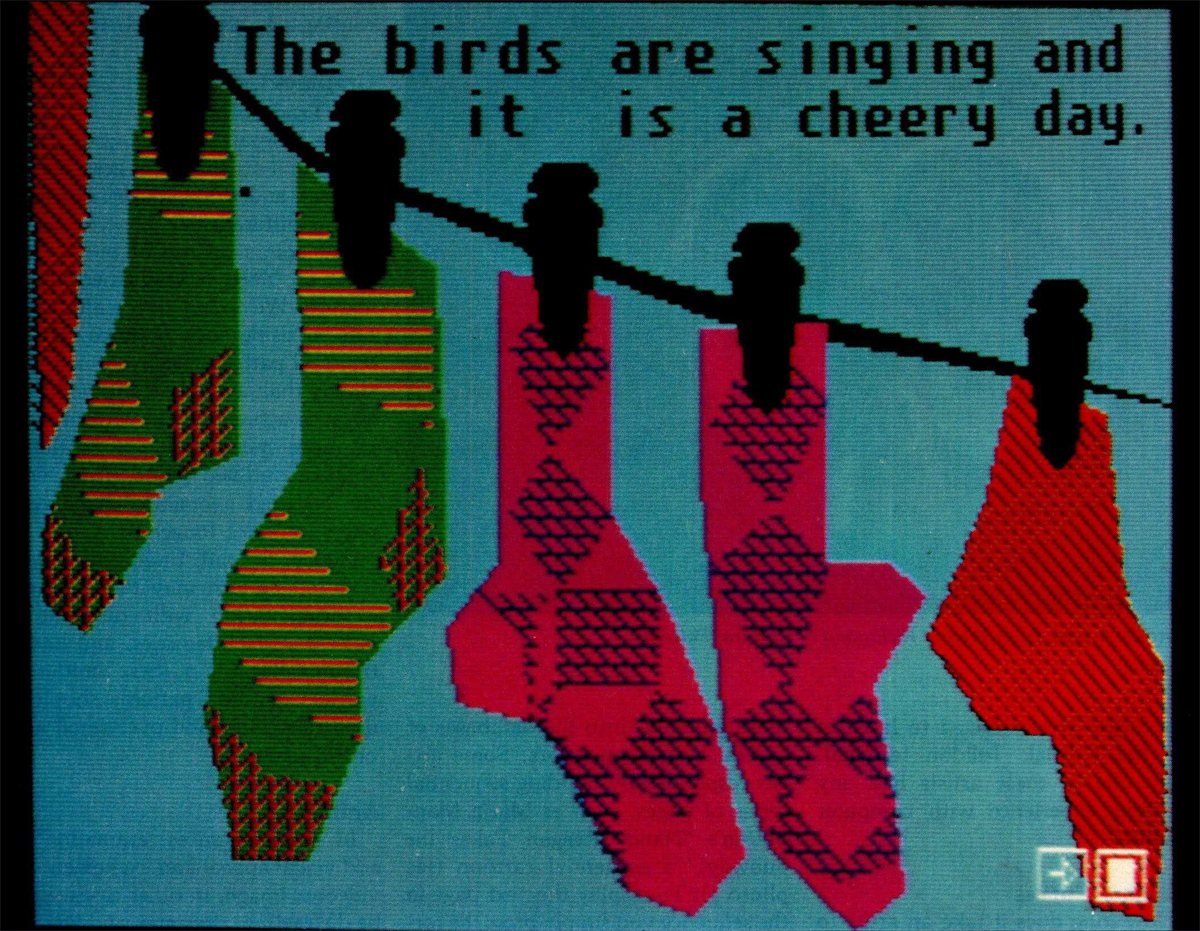
Page from Snapshots by Mary Beams. Made with Norpak Telidon terminal in the early 80s. Image from the article Graphics Artistry On Line in BYTE Magazine 1983-07.
Some teletext/videotex standards offer more than alphanumerical characters. Like the Canadian Telidon, which used vector graphics. These are Telidon images, made by Jacques Palumbo in 1986.
Meanwhile in Japan, videotex was more complex: it was alphaphotographic. That is a combination of text and hi-res photos. It supposedly worked like a fax machine for the TV. See Captain.